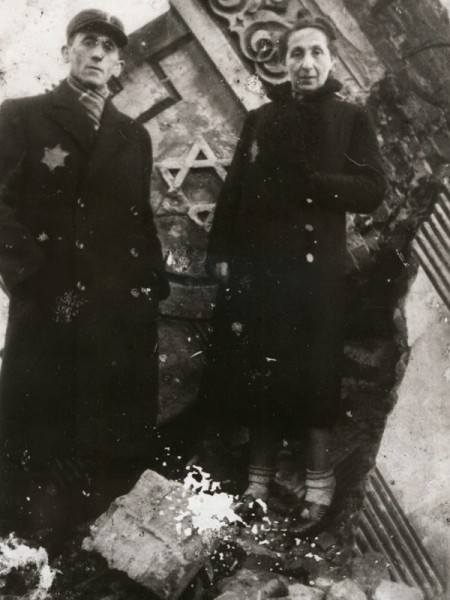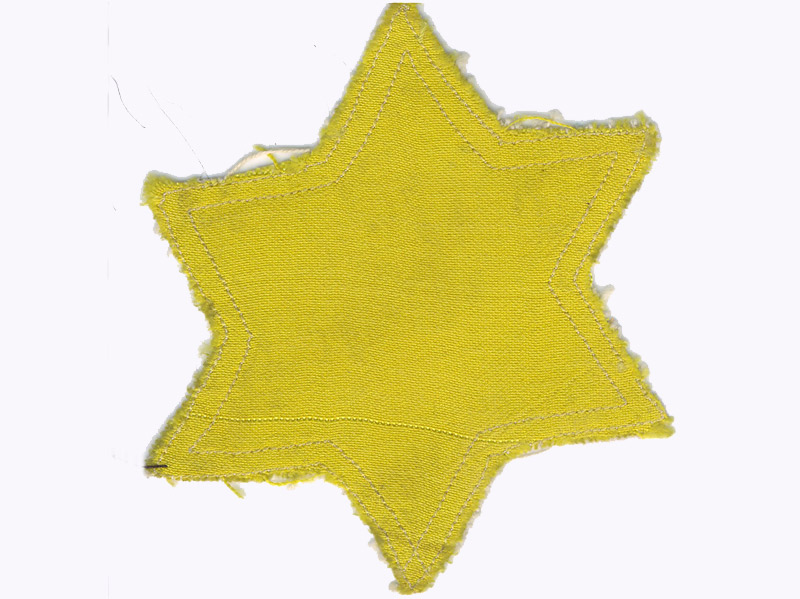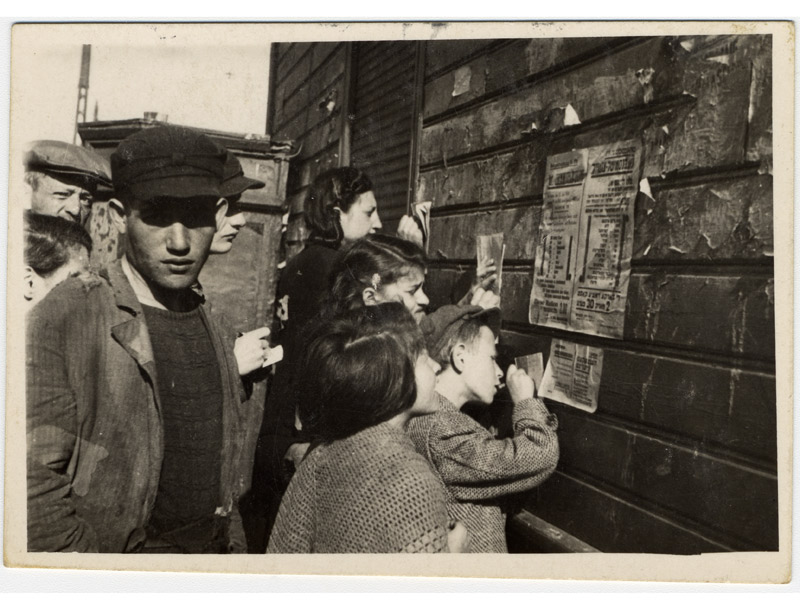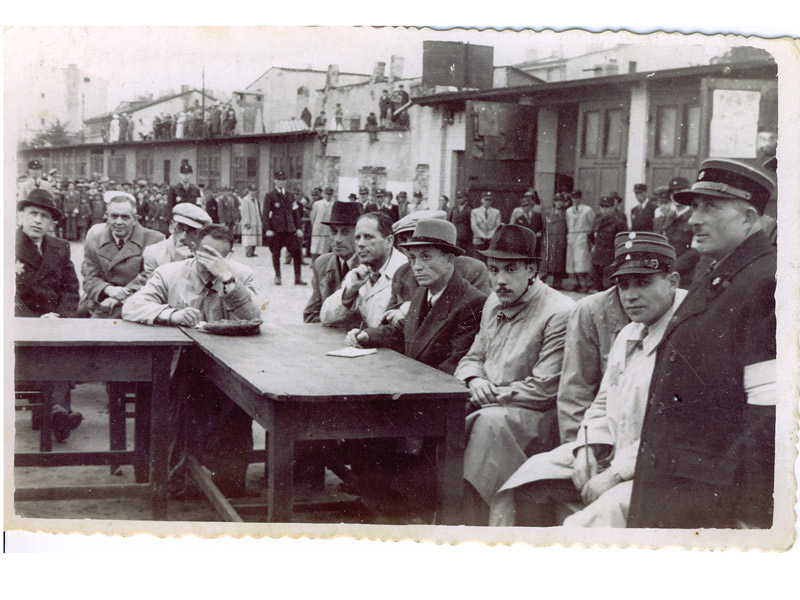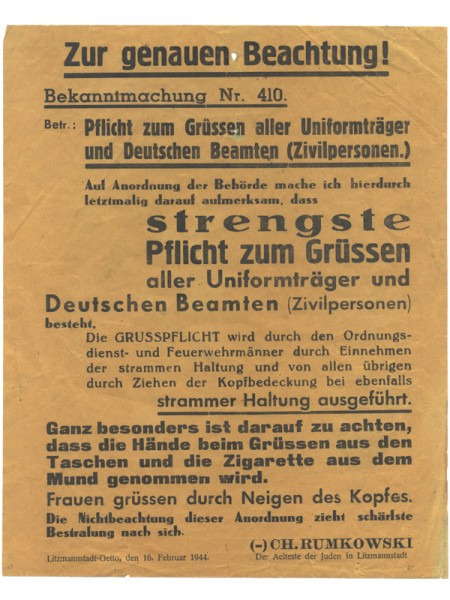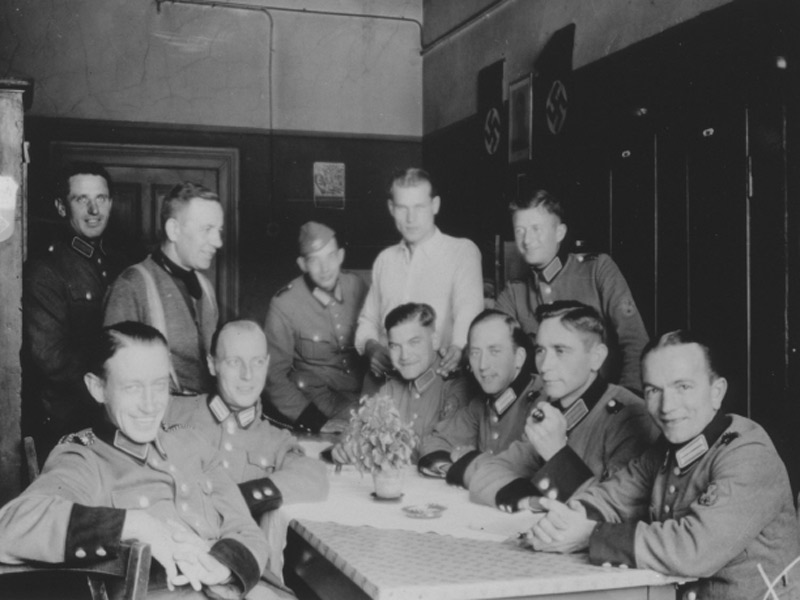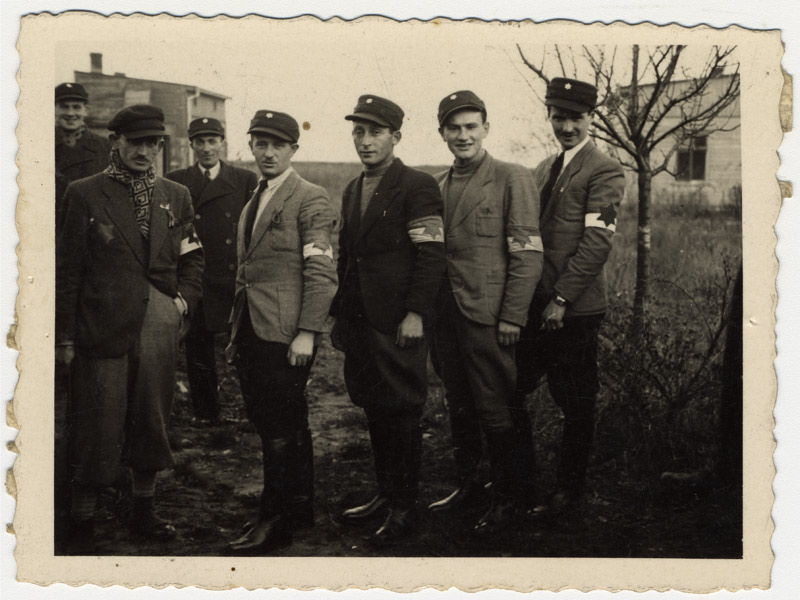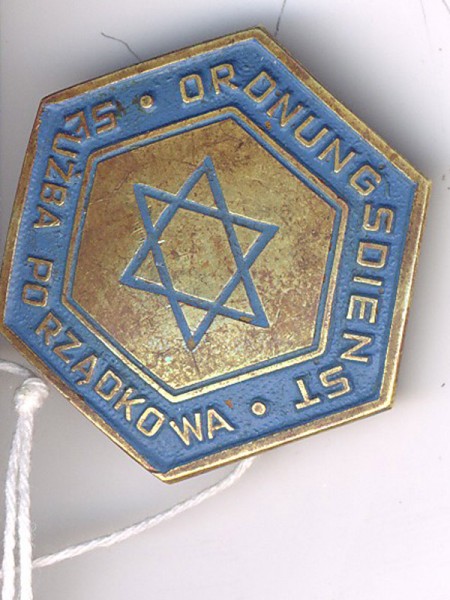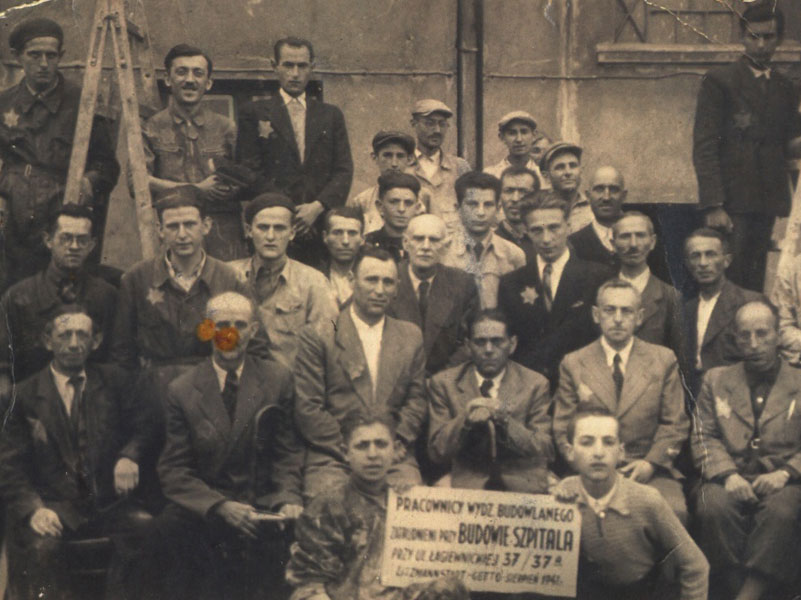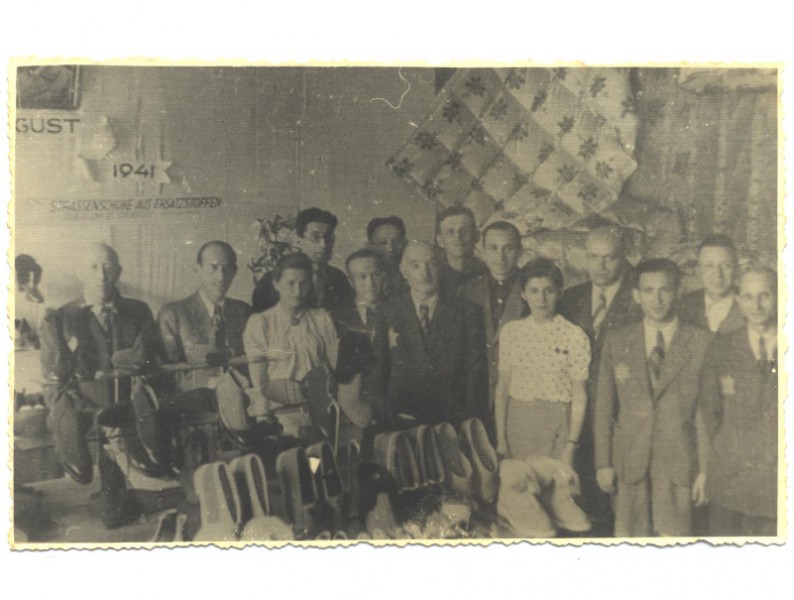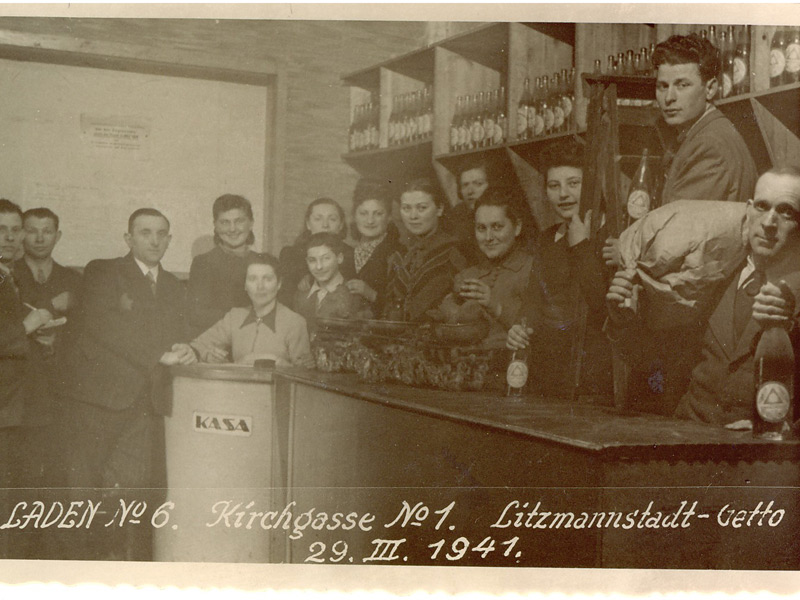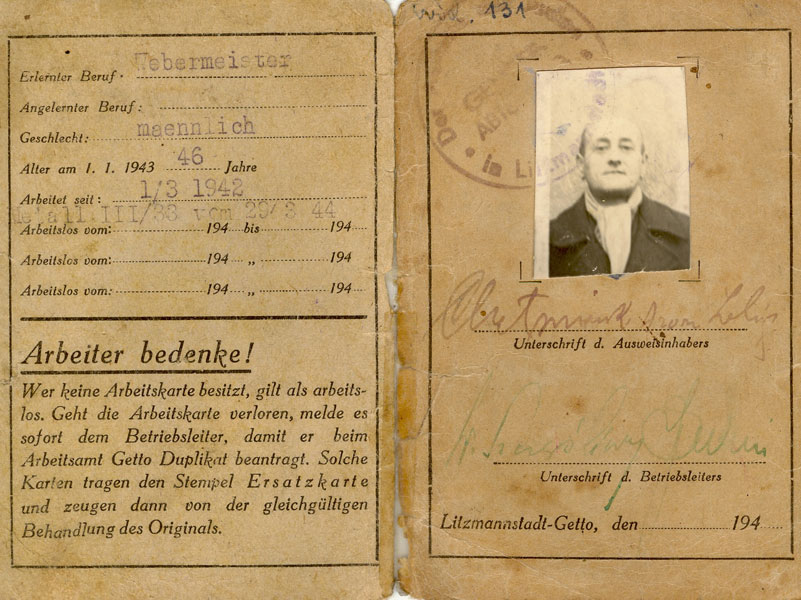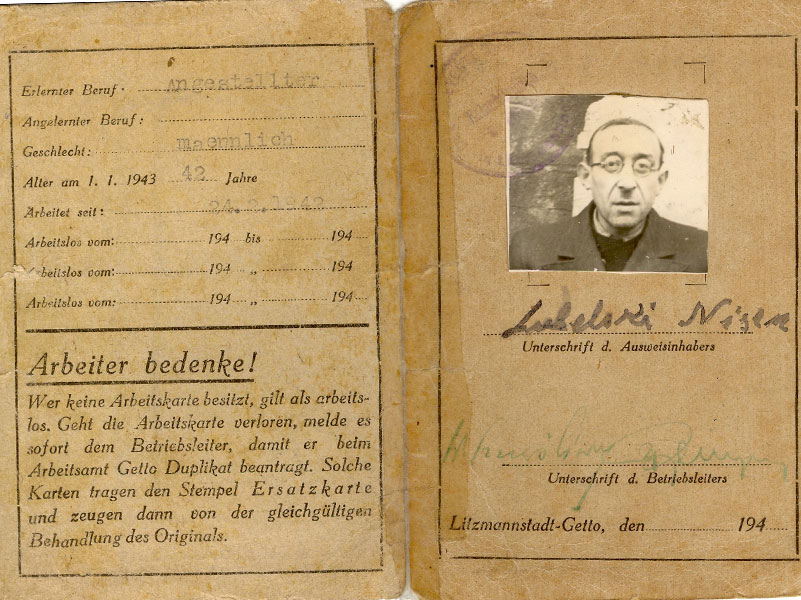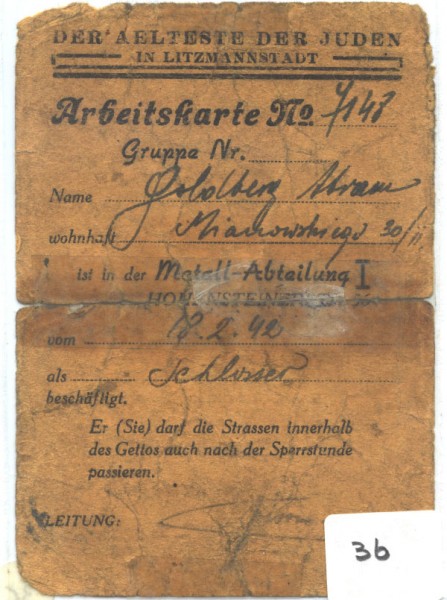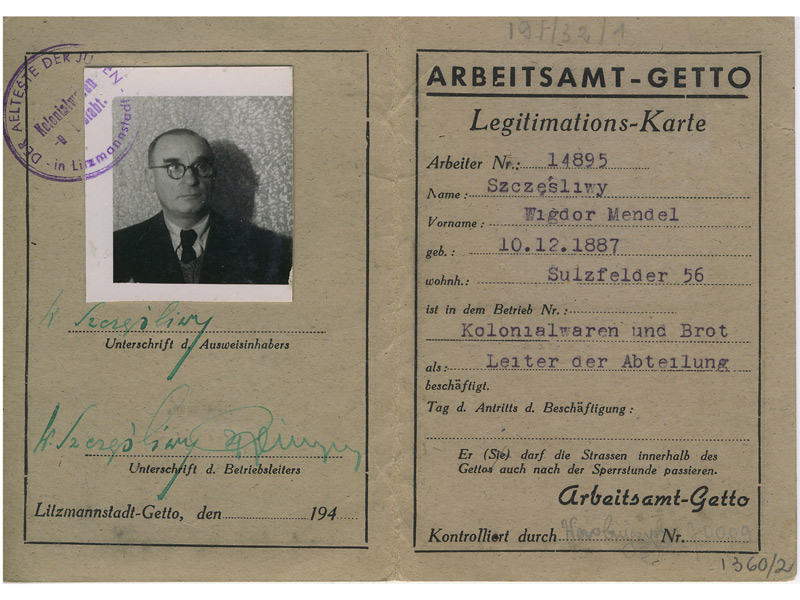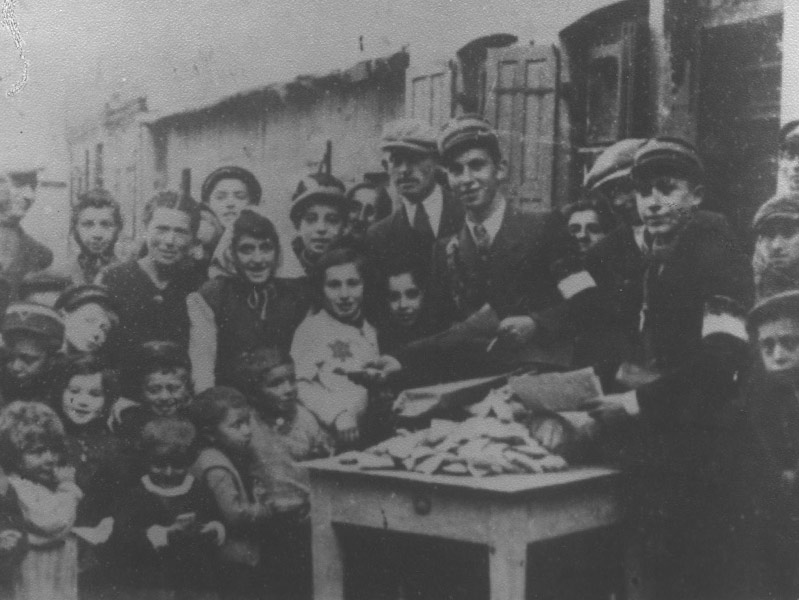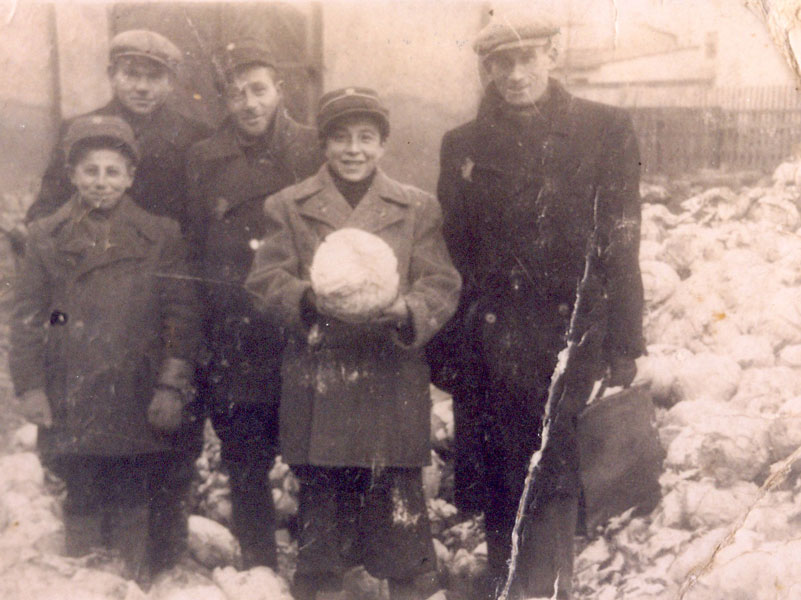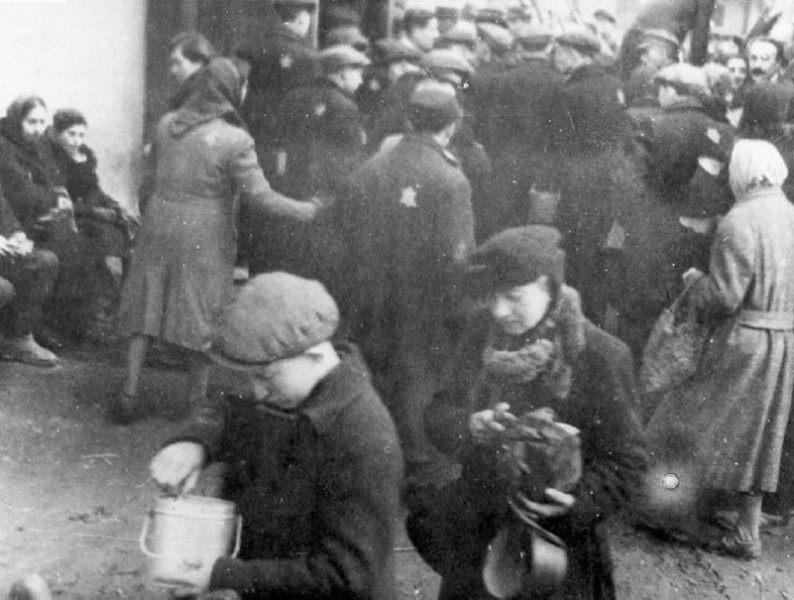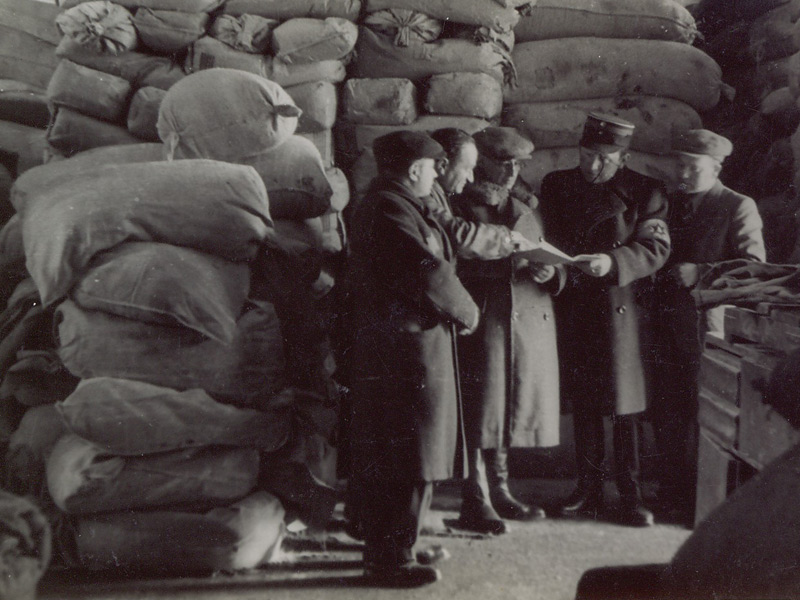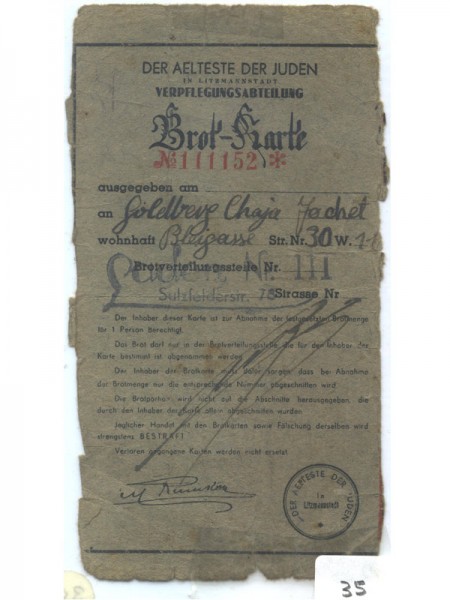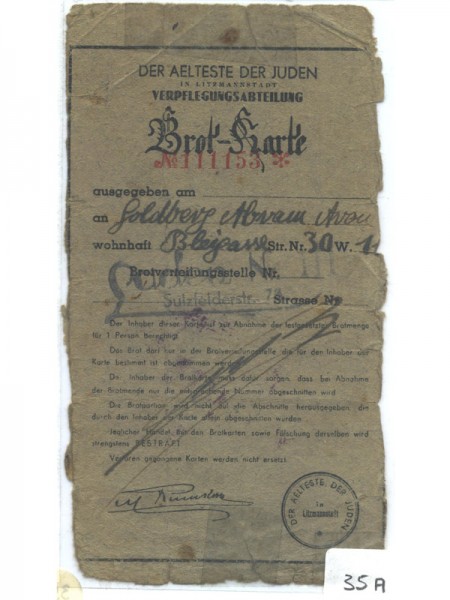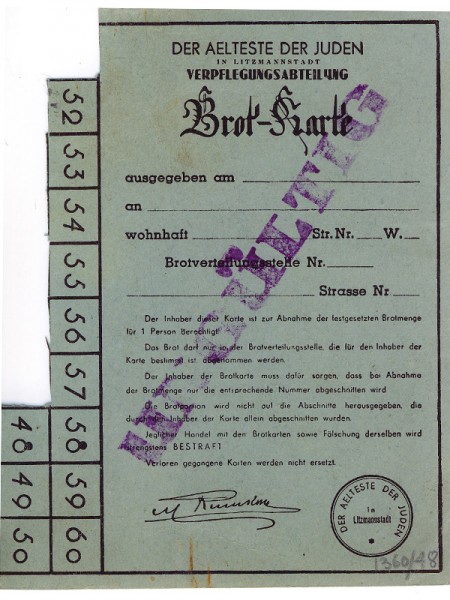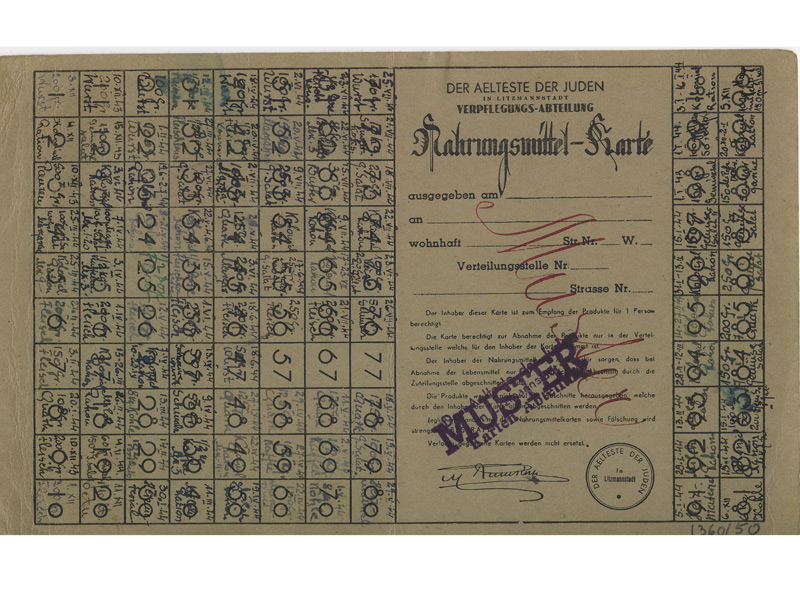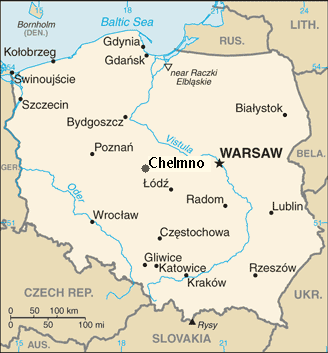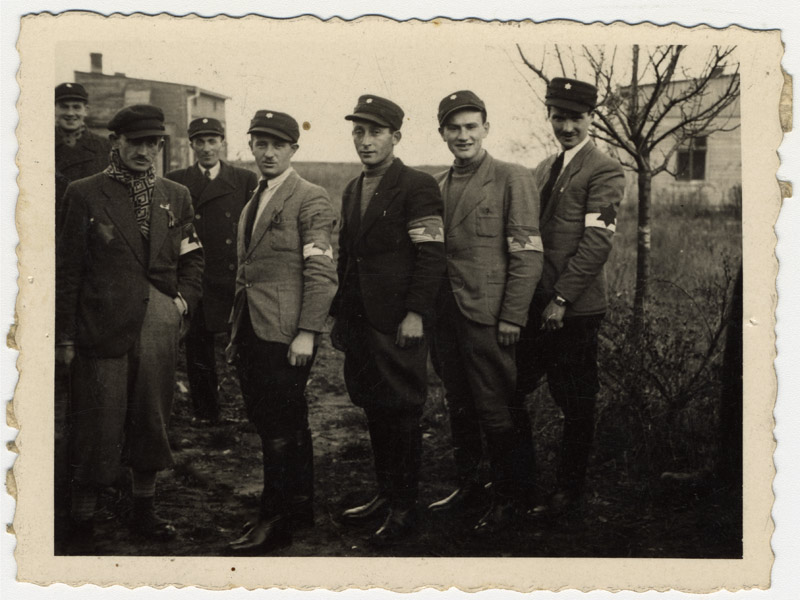Story:
Nazi Terror
From the moment the Nazis invaded Lodz in September 1939, they unleashed their terror on the Jews. First they destroyed synagogues and looted property. Then they implemented the wearing of the Jewish star and began forcing Jews to relocate. At first they sent Jews from one area of Lodz to work in a camp in nearby Radogoscz. Then they moved other Jews into the area vacated by the deported Jews and began creating a ghetto. By April 1940 they sealed the ghetto and Jews were imprisoned in this area, only allowed to leave with permission.
Back to top
Story:
Ghetto Rules
This notice clearly states how Jews were to greet uniformed officials: “When greeting Security, Police and Fire Brigade Personnel you are to stand to attention and take off your hats. Particular attention is to be paid that hands are taken out of pockets and cigarettes taken out of the mouth. Women will greet by bowing their heads. The non-observance of this order will be severely punished”.
Having to bow or take off their hats to German officials would have been humiliating for the Jews, undoubtedly increasing their resentment towards the Nazis. However, inhabitants had to abide, as Rumkowski was infamous for imposing harsh punishments for breaking ghetto laws.
This document is a good example of Rumkowski’s authoritarian rule of the Lodz ghetto. Rumkowski regularly published proclamations relating to new rules and regulations within the ghetto, which would have originated from the German administration. He signed this notice on 16 February 1944, by which time only the working element of the ghetto remained. Rumkowski approved the majority of notices in the ghetto, others were issued directly by Hans Biebow, Head of the German Ghetto Administration, or the Gestapo.
Back to top
Story:
Slave Labour
Under Nazi rule, Jews who were able to work became slave labourers to German industry.
One of Rumkowski’s strategies to preserve life in the Lodz Ghetto was through the mobilisation of the workforce. Rumkowski’s “rescue through work” strategy evolved to become a way in which the ghetto could be protected from liquidation by providing a huge profit to the German administration. In order to motivate the ghetto inhabitants to seek employment, Rumkowski made regular references in his speeches to the importance of work in the ghetto.
On 20 December 1941, he exclaimed, “a work card is the passport which guarantees your peace”, promising that the working segment of the population would be exempt from deportation from the ghetto. By August 1943 90% of the population was employed. Rumkowski successfully transformed Lodz into a labour ghetto and this was a contributing factor into its longevity in comparison with the lifespan of other ghettos in Europe.
Back to top
Story:
Work card
In order to survive in the ghetto, the Jews needed a work identity document, particularly as it ensured receipt of food rations. Work cards were a form of identification in the ghetto, which needed to be carried at all times.
Back to top
Story:
Hunger
The German administration strictly controlled the amount of food that was delivered to the ghetto and they used starvation as one strategy to eliminate a significant portion of the population. The Nazis had developed a daily food pyramid for the population of the German territories. It favoured German citizens by allocating them 2,163 calories, 699 for gentile Poles and 184 for Jewish Poles. Furthermore, the rations allocated for Jews only amounted to 15 percent of the minimum daily requirement. Therefore it provided ghetto inhabitants little chance of surviving on the official ration alone.
Judenrat (Jewish Councils), under the leadership of Rumkowski, had the difficult task of feeding the population with little food at their disposal. Ration cards were implemented on 2 June 1940 and given to every inhabitant of the ghetto. Originally Rumkowski prioritised workers (after the Judenrat, police and other ghetto officials). However, when he announced that bread rations would be distributed equally amongst the working and non-working elements of the ghetto, 350 carpenters protested on 23 January 1941. By 1942 only the employed were eligible for ration cards. The pitiful amount of food these cards provided was paid for with money earned in employment. If inhabitants wished to purchase additional food on the black market they could scarcely afford to, due to swollen prices.
Back to top
Story:
Food ration cards
Food was in short supply in the ghetto, so in order to receive it, you needed ration cards, and in order to obtain this card you needed to be registered to work. Upon receiving the ration, a section of the card would be torn off. Complaints of insufficient food were rife amongst inhabitants and starvation was one of the major contributors to death in the ghetto.
According to Bono Wiener: “Hunger in the ghetto was a permanent part of our lives… When you don’t have enough food for weeks or for months it becomes a part of your life. You live with it, you sleep with it, you dream of it, you talk about it. So hunger was a part of the life in the ghetto even for the person who ate their (allotted loaf of) bread in one go, or the person who divided it and had a little bit (each day). We didn’t think about anything else because there was never enough… we had four years of permanent starvation. Four years – day and night – we didn’t have enough food”.
Back to top
Story:
1942 Deportations
1942 marked a turning point in the Lodz ghetto, and the Holocaust as a whole, with the full-scale implementation of extermination camps across Europe. In December 1941, the Chelmno extermination centre was established sixty kilometres from Lodz. During January and May 1942 55,000 Jews and 5,000 Sinti-Roma (gypsies) were sent to Chelmno and murdered. The second major deportation occurred in September 1942, often referred to as the Sperre, in which 15,859 children, elderly and ill inhabitants were also sent to Chelmno after the German administration decided to transform Lodz into a total labour ghetto. In order to do so, they required these unproductive elements to be removed.







